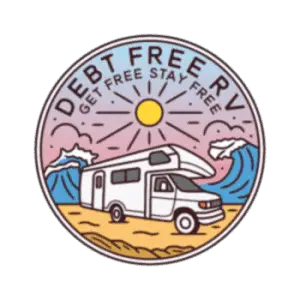Many Americans are feeling a call back to open spaces, a slower-paced lifestyle, and freedom from the shackles of debt.
Owning land and living in an RV is becoming a more popular American Dream to which many are flocking. But before we all hitch a trailer to our trucks and drive into the mountains to set up shop, there are many details to purchasing land that cannot be overlooked, including: Zoning and land use, topography, easements, utilities, environmental regulations, mineral rights, and tax excemptions.
Buying off-grid land for RVing is not nearly as simple as it sounds, and requires time, research, patience, and (perhaps) more money than many people anticipate. So, before you buy acreage somewhere to live off the land, make sure you know what you’re getting yourself into, and arm yourself with as much knowledge as possible.
Zoning and Land Use
Before buying land, the first thing to decide is how the land will be used. Counties have their own rules and regulations referred to as Zoning and Land Use ordinances.
Zoning dictates for what purpose land can be used: Commercial, Industrial, Recreational, or Agricultural. If you’re looking to live in a trailer on your own piece of paradise, but the zoning is for commercial or industrial usage, then you’re out of luck and- probably- out of a few thousand dollars.
Zoning and Land Use regulations dictate the requirements for the following:
- Utility Lines
- Septic Tank Installation
- Types of Structures Allowed
- Minimum Size of Structures
- Height of Structures
- Time to Build (homes)
- Number of Dwellings Permitted on Land
- Number of Bedrooms Required
- Land Use (Commercial, Industrial, Recreational, Agricultural)
- Farm Animals / Ranching / Hunting
Recreational and Agricultural zoning are the two types that may allow for RVing on one’s own land. However, depending on the county, even these may bar full-time RVing.
A common regulation established in counties all over the country is limited “camping”; Allowing for only temporary stays in RVs, trailers/campers, tents, and even yurts! Regulations will can include a 30, 60, 90, or 180 day “camping” cap annually.
After “camping” for the maximum allotted time, RVers need to leave the land until the new cycle begins.
This defeats the entire purpose of buying land to camp full-time.
Stories abound of people living in RVs, only to have County officials serve the owners with eviction papers (and fines!), forcibly removing RVers from their own land.
So, before purchasing, check with not only the person selling the land, but also contact the county itself, making sure full-time camping, without restriction, is legal on the land you’re looking to purchase.
Doing your due diligence sooner than later will save you money, time, and a ton of headaches!
Topography
The topography of land is as important as Zoning and Land Use. Depending on the plans for future land use, the area’s topography will dictate whether or not those plans will become reality.
Make sure to thoroughly research the area as to avoid common pitfalls such as:
Flood Plains: Often overlooked by new land owners, setting up shop in a flood plain can hamper any plans for RVing, homesteading, or farming. If due diligence is not done prior to moving onto the land, come the first rain (or monsoon) season, the new landowner is in for a shock: Unusable, flooded land.
No Rain: Opposite of dangerous flood plains, purchasing land where it rains infrequently can also cause severe problems to full-time off-grid life. If rain is rare in the area, make sure there is another method to access water.
Water catchment systems are often built in deserts and open plains alike, but if rain simply doesn’t fall for months or even years, another method must be utilized. Check to see if there is a general store or Walmart relatively close by, so water can be collected and brought back to camp.
Easements
Easements are essential to understand before purchasing land. In essence, an easement is the legal access to land owned by another person.
For example: Suppose you purchase land which requires you to drive on your neighbor’s dirt road in order to access your property from the nearest city road. A “deeded easement” must be granted, establishing that the dirt road’s owner will allow you to use the privately owned property in order to access your land.
A deeded easement grants very limited access to another’s land: Granting merely the use of an access road. Under such an easement, the landowner is still responsible for land maintenance, payment of property taxes, and insurance (where applicable).
Deeded assessments, if not understood in totality, can wreak havoc on home and business-owners.
A “fee simple” title is for those who have access to their own land directly from city roads; not needing access to anyone else’s private property in order to access one’s own land.
Fee Simple titles, when available, is a future land-owners best bet to an easier move- and life- on the property. The less legal mess involving neighbors, the better.
Utilities
Living in the city, we’ve grown accustomed to having easy access to amenities such as electricity, water, septic, gas, and trash disposal.
But when buying land, these amenities are often absent, and county ordinances often require land owners to install these utilities prior to living on the land.
If land does not already have these utilities set up, get ready to spend a pretty penny. Depending on how close the land is to utilities (1 mile versus 10 acres, for example), just getting electric connected could run tens of thousands of dollars. Digging a county-approved water well could cost anywhere from $1200 to over $12,000, and septic systems can run anywhere from $3,000 to $15,000.
And these prices do not include the added costs for surveyors or county permit fees. The total cost for adding absent amenities to land can, for some, make landownership cost-prohibitive.
Environmental Regulations
When purchasing land, make sure to check into the area’s environmental regulations. There may be endangered and protected species living on your land, and if this is the case, your ability to build structures may be obstructed by the county.
If you build an unsanctioned structure which disregards the county’s environmental regulations, you run the high risk of paying some hefty fines.
Mineral Rights
This one throws many landowners for a loop: Owning land does not necessarily mean you own what’s underneath it.
Property rights and mineral rights can be sold separately: Property rights include the land surface, while mineral rights include what’s underneath and, in some cases, surface minerals as well.
The most commonly extracted minerals include:
- Clay
- Coal
- Gravel
- Natural Gas
- Oil
- Precious Metals (Gold and Silver)
Typically, land and mineral rights are sold together, however, as the property changes hands over the years, there is a possibility that the rights have been separated and sold to different purchasers.
Unfortunately, simply looking at a deed will not divulge whether or not a land’s rights have been separated, so potential buyers need to do a little extra legwork.
A trip to the local county clerk’s office is where to start: From there, you can locate past sales of the land, and construct a Chain of Title.
When researching the Chain of Title, a potential buyer will be able to construct the entire history of the land’s ownership over the years, who owned it, if and when the mineral rights were separated from the land rights, and any liens, foreclosures, or divorces impacting ownership.
If your area happens to be mineral-rich, a little investigation can go a long way. Otherwise, you might wake up one day to the sounds of tractors and drills digging into your land, without any recourse.
Tax Exemptions
And now for some good news: Tax exemptions. Depending on how your land is zoned, and what your intended use for the land is, you may be eligible for an Agricultural Property Tax Exemption.
If approved for this tax exemption, the Appraisal District will lower property taxes, possibly saving the landowner thousands of dollars annually.
Agricultural Property Tax Exemptions may be approved if a landowner:
- Loans out land to farmers
- Has Cattle
- Maintains bees for honey production
- Has wildlife on the property
In order to be approved for the Arg Tax Exemption, one must first apply with the Appraisal District. Having the ability to lower living costs while on your own land by performing beneficial services such as helping other farmers or caring for honey bees, is a win-win situation.
Conclusion
Buying land and living in an RV (or home), is the dream of many. But, it is often much less simple than most people think.
From zoning laws to easements, topography to mineral rights, purchasing land requires planning, time, and- even for the cheapest land- an extra bit of money socked away.
Learning all that is needed for land ownership might feel overwhelming at first, but don’t let that deter you!
Only positive results can come from educating yourself, and knowing the ins-and-outs of purchasing land: You’ll know your rights, become knowledgeable of your county’s regulations, and have a deeper understanding of your land.
So, best of luck to you on your way to the American Dream.

